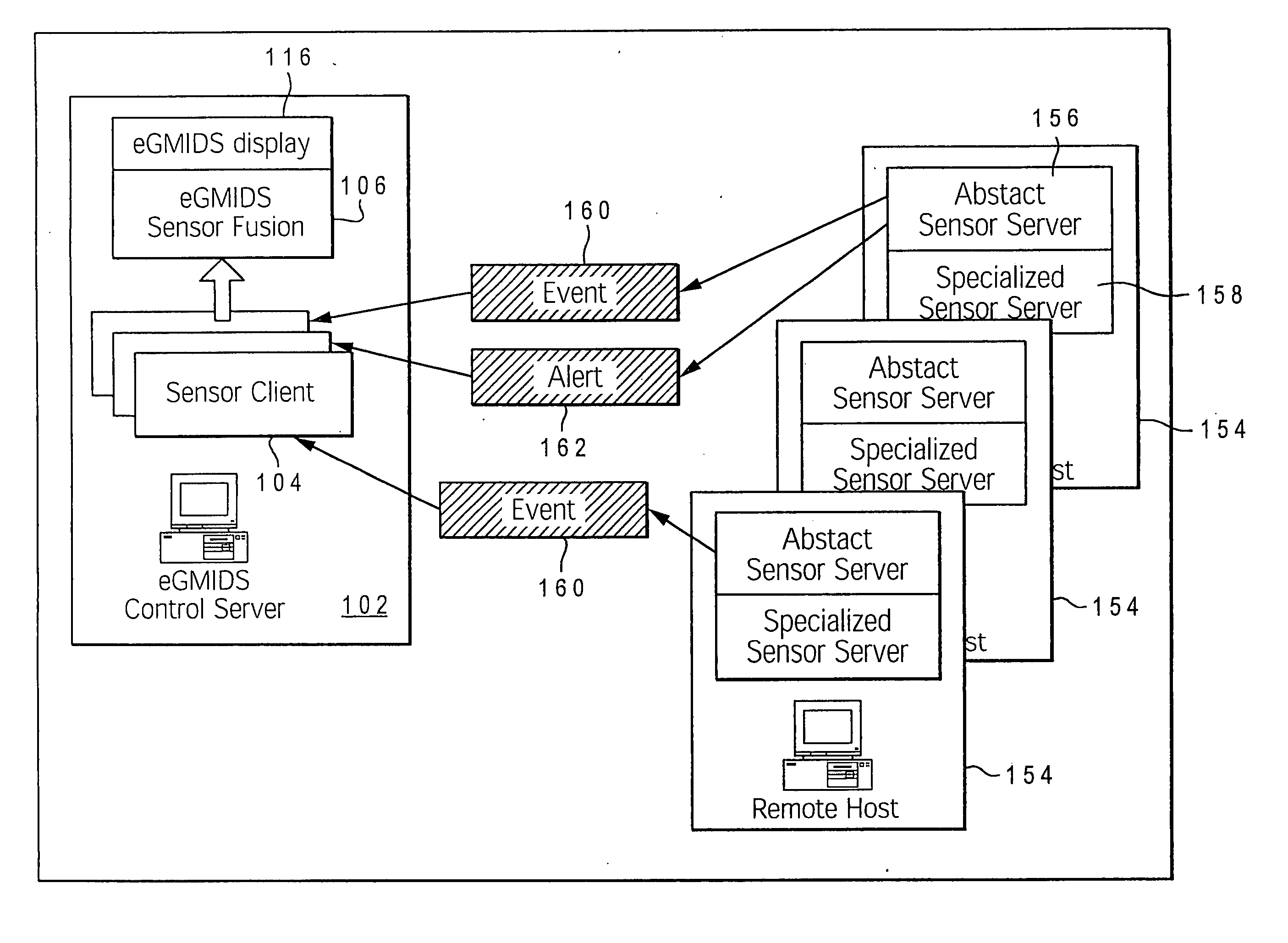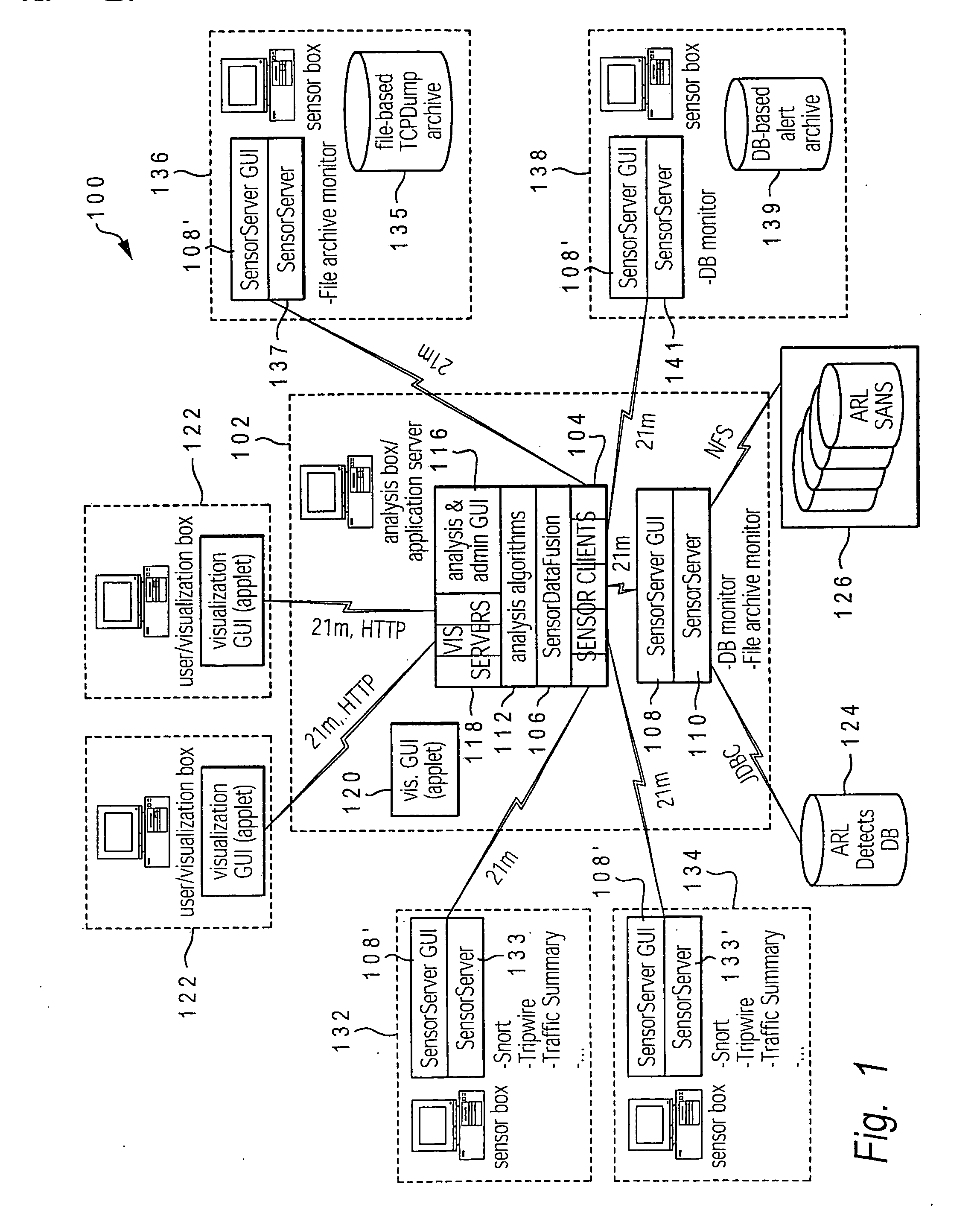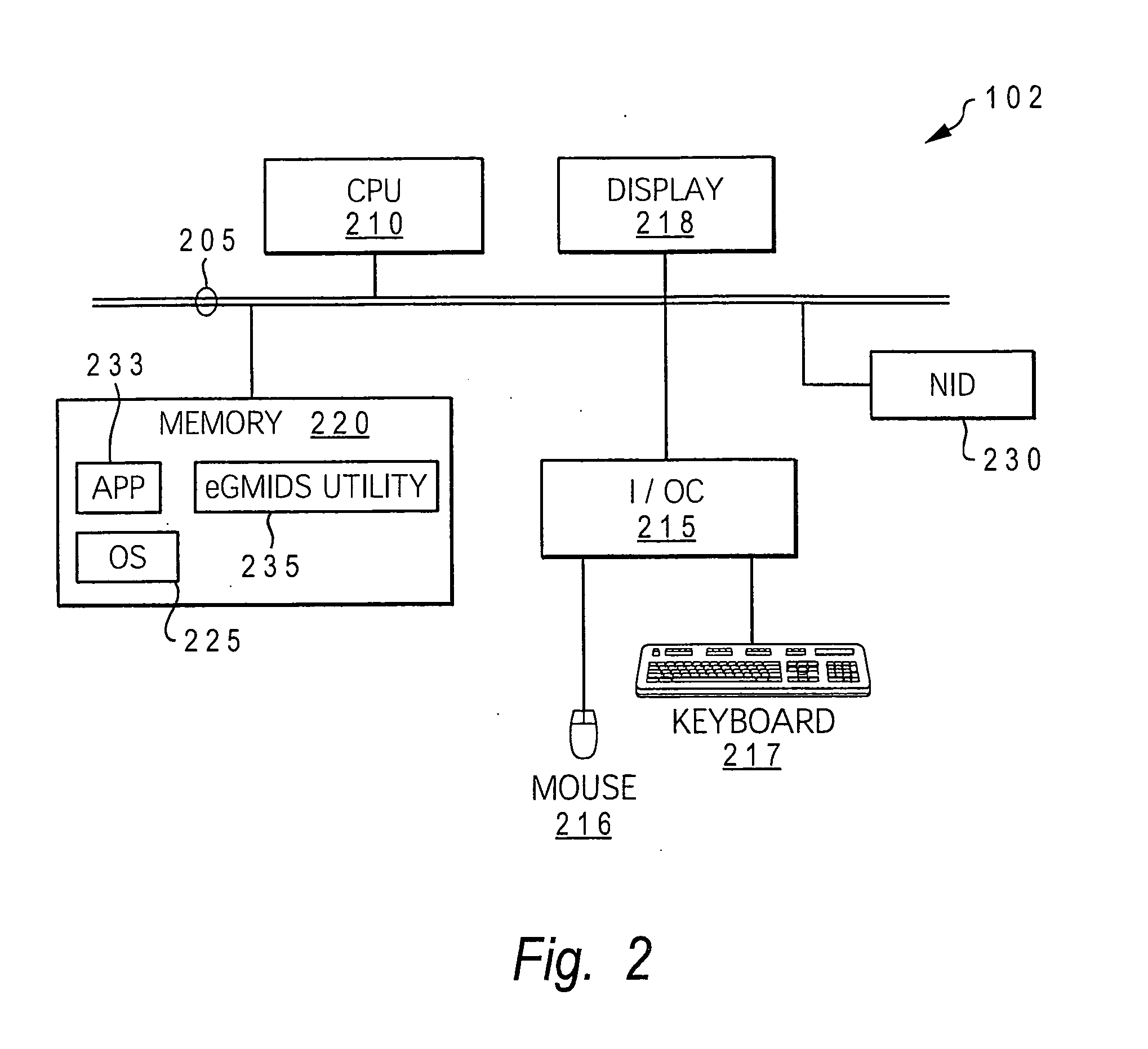Intelligent intrusion detection system utilizing enhanced graph-matching of network activity with context data
a graph-matching and context data technology, applied in the field of computer network security, can solve the problems of reducing affecting the organization, and ensuring the security of those networks, so as to reduce the number of threat patterns searched and reduce the size of threat patterns
- Summary
- Abstract
- Description
- Claims
- Application Information
AI Technical Summary
Benefits of technology
Problems solved by technology
Method used
Image
Examples
Embodiment Construction
[0040] The present invention provides a method, system, and computer program product for detecting and mapping activity occurring at and between devices on a computer network and utilizing the mapped activity to detect and prevent network intrusions. Several processes are provided, including detecting, investigating, and analyzing network intrusions, such as malicious attack on or unauthorized use of network resources. An enhanced graph matching intrusion detection system (eGMIDS) is provided via an eGMIDS utility executing on a control server within the network. The eGMIDS utility comprises data collection functions, data fusion techniques, graph matching algorithms, and secondary and other search mechanisms that are accessible via an eGMIDS analysis console. These components are utilized to provide early detection of possible attacks on the network or network device(s).
[0041] The eGMIDS performs signature-based intrusion detection where the structure and relationship (including, ...
PUM
 Login to View More
Login to View More Abstract
Description
Claims
Application Information
 Login to View More
Login to View More - R&D
- Intellectual Property
- Life Sciences
- Materials
- Tech Scout
- Unparalleled Data Quality
- Higher Quality Content
- 60% Fewer Hallucinations
Browse by: Latest US Patents, China's latest patents, Technical Efficacy Thesaurus, Application Domain, Technology Topic, Popular Technical Reports.
© 2025 PatSnap. All rights reserved.Legal|Privacy policy|Modern Slavery Act Transparency Statement|Sitemap|About US| Contact US: help@patsnap.com



